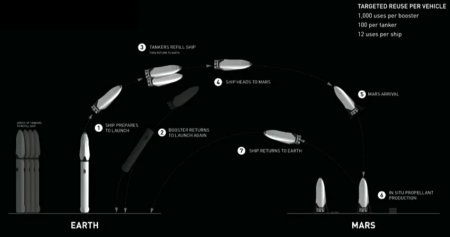A new NASA authorization bill was introduced in the Senate on September 15, calling for NASA to rethink its asteroid redirect mission as well as begin the process of shifting the operation of ISS from government to private enterprise.
Among [the bill’s policy provisions] is language regarding ARM, a mission that involves sending a robotic spacecraft to retrieve a boulder from a near Earth asteroid and place it in lunar orbit to be visited by astronauts. “It is the sense of Congress that the technological and scientific goals of the Asteroid Robotic Redirect Mission may not be commensurate with the cost,” the bill states, referring to the robotic portion of ARM. Alternative missions, it says, “may provide a more cost effective and scientifically beneficial means to demonstrate the technologies needed for a human mission to Mars.” The bill directs NASA to evaluate alternative mission concepts to compare their scientific, technical and commercial benefits, as well as their costs, with ARM. That study would be due to Congress 180 days after the bill’s enactment.
The bill also addresses planning for the eventual end of the ISS in the 2020s, stating that there is a need for an “orderly transition” from the current NASA-led management of the station to “a regime where NASA is one of many customers of a low Earth orbit commercial human space flight enterprise.” That provision would require NASA to assess its needs for continued research in low Earth orbit after the ISS is retired, the existing and projected commercial capabilities to meet those needs, and steps NASA can take to stimulate both the supply of commercial facilities and demand for their use. The bill also calls on NASA to study an extension of the ISS “through at least 2028” to identify the technical issues, scientific benefits, and costs of such an extension.
The authorization also endorses SLS and Orion, which isn’t surprising considering that most of the Senators proposing this authorization come from states with big contracts for that boondoggle.
In recent years authorization bills have not meant that much. While they express the desires of some members of Congress, which does influence policy, their specifics are usually ignored in subsequent years. Nonetheless, the new focus here on private space suggests that the advantages of competition and private enterprise is finally beginning to leak into the tiny little brains of our elected officials. That they are still pushing SLS and Orion, however, shows that the leak is still tiny, and somewhat limited.
Give it time, however. Give it time. When private companies have begun regular launches of their big rockets, well before SLS completes its first manned flight, these legislators should finally realize what most people already know, that SLS and Orion is a complete waste of money.

